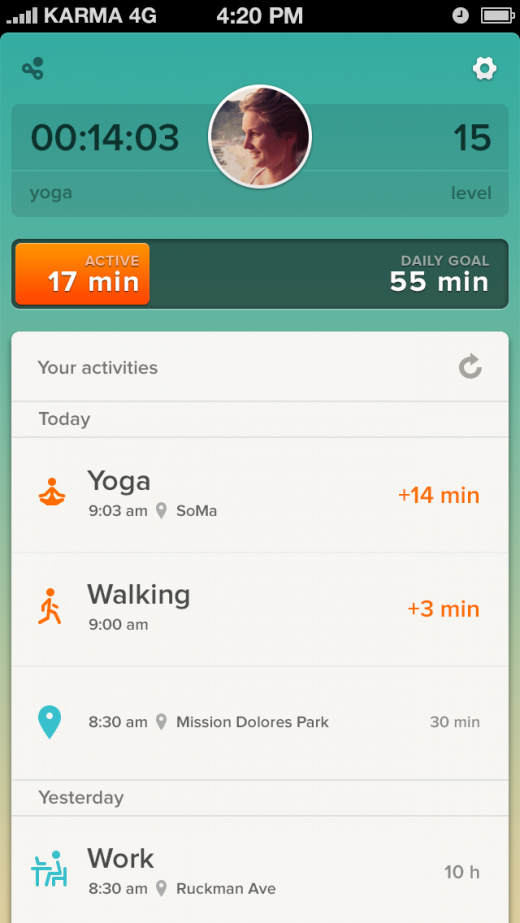
Based in San Francisco, Human is a stealthy fitness startup founded by Renato Valdes Olmos of Cardcloud and Paul Veugen of Usabilla. Launching soon with a self-titled app, Human’s goal is to make the ‘quantified self’ trend accessible to people who aren’t athletes or data geeks — the mainstream.
Aside from Olmos’ departure from Cardcloud, Human has kept quiet about its plans over the past year, save a lofty description on its site stating the following:
“The human body is an incredible machine. It works differently for every single one of us. Human helps you to unlock your full potential.”
Now, Olmos and Veugen have opened up ahead of their launch to share new details on the upcoming app, as well as their thoughts on simplifying the way we look at exercise.
A healthy human must move 30 minutes each day
Of course, the concept that moving around occasionally is good for our health seems self-explanatory, but Olmos has plenty of stats to make you feel like we’ve completely lost our way as a species (at least in the U.S.). For example, “75% of all Americans haven’t moved more than 10 minutes straight every week.” This sort of thing is difficult to poll, but given how staring at a screen eight hours a day has usurped muscle-powered work as the norm, I have trouble doubting it.

You may or may not live your life as presented in the stat above, but in my own experience using Human, the app led me to an alarming realization: on my first day using the app, I didn’t move more than 7 minutes straight.
I worked from my apartment, walked to a meeting down the street, headed home and continued to work. Then, at around 9pm I ate and went to bed, exhausted. I hit nearly 19 minutes in total, but maxed out at 7 minutes of constant movement — constant being the keyword, as that’s what gets your heart rate up.
But Human does more than reveal your bad habits; it asks you to rethink exercise entirely. Olmos tells us that when they first started building a passive tracker back in October. They set out asking if they could build something like a “Fitbit or Nike Fuelband in software form.” The short-term goal was simply to build something accurate that didn’t drain your battery immediately. The first prototype drained an iPhone’s battery in 4 hours.
The prototype solely provided passive tracking, which Olmos says is a cool idea, but isn’t actually “solving anything for a mainstream audience. Seeing what you’ve done is cool,” he tells us, “but it gets boring after a while.”
Olmos and Veugen have since improved the app’s efficiency to the point where you’ll get almost a day out of your phone while using Human. That in mind, I’ve been given access to an experimental prototype (as pictured in the app screenshots above and below). Human plans continuous improvements to be made in efficiency before the final release.
Human’s mission
Moving beyond passive tracking, Human’s mission is to track your movements and use them to help you accomplish a very simple goal: to move more than 30 minutes each day.

According to Olmos, even people who visit the gym once or twice a week are actually living a sedentary life, because exercise is more than “breaking a sweat or killing yourself at the gym.” To that point, the app doesn’t track calories or even the intensity of your movement. Human simply wants you to move 30 minutes a day, and it will help and encourage you to achieve this goal.
This is one of the ways that Human has set itself apart from other fitness apps and tackers. Services like RunKeeper, Runtastic, Strava and even Nike+ are all worth trying, but if you’re not much of an athlete, it’s highly likely you won’t find them appealing. Right now, Moves is the closest competitor to Human — its core purpose being to show you how much you move throughout the day.
Human is slated to launch worldwide in the next few months, but if you’d like to start using the app early, there’s a special signup form for TNW readers right here.
Featured image credit: Mario Tama / Getty Images
Get the TNW newsletter
Get the most important tech news in your inbox each week.






